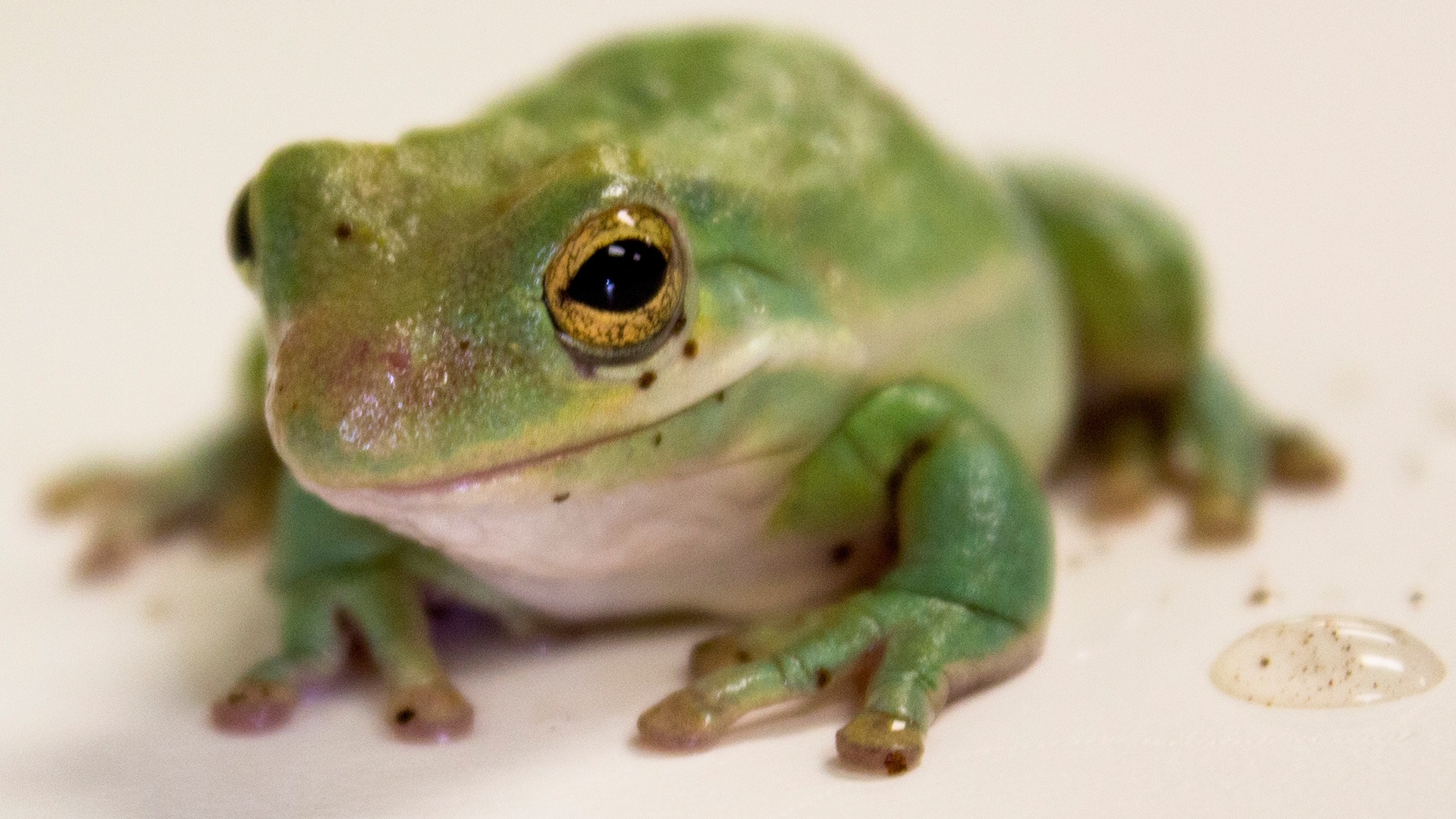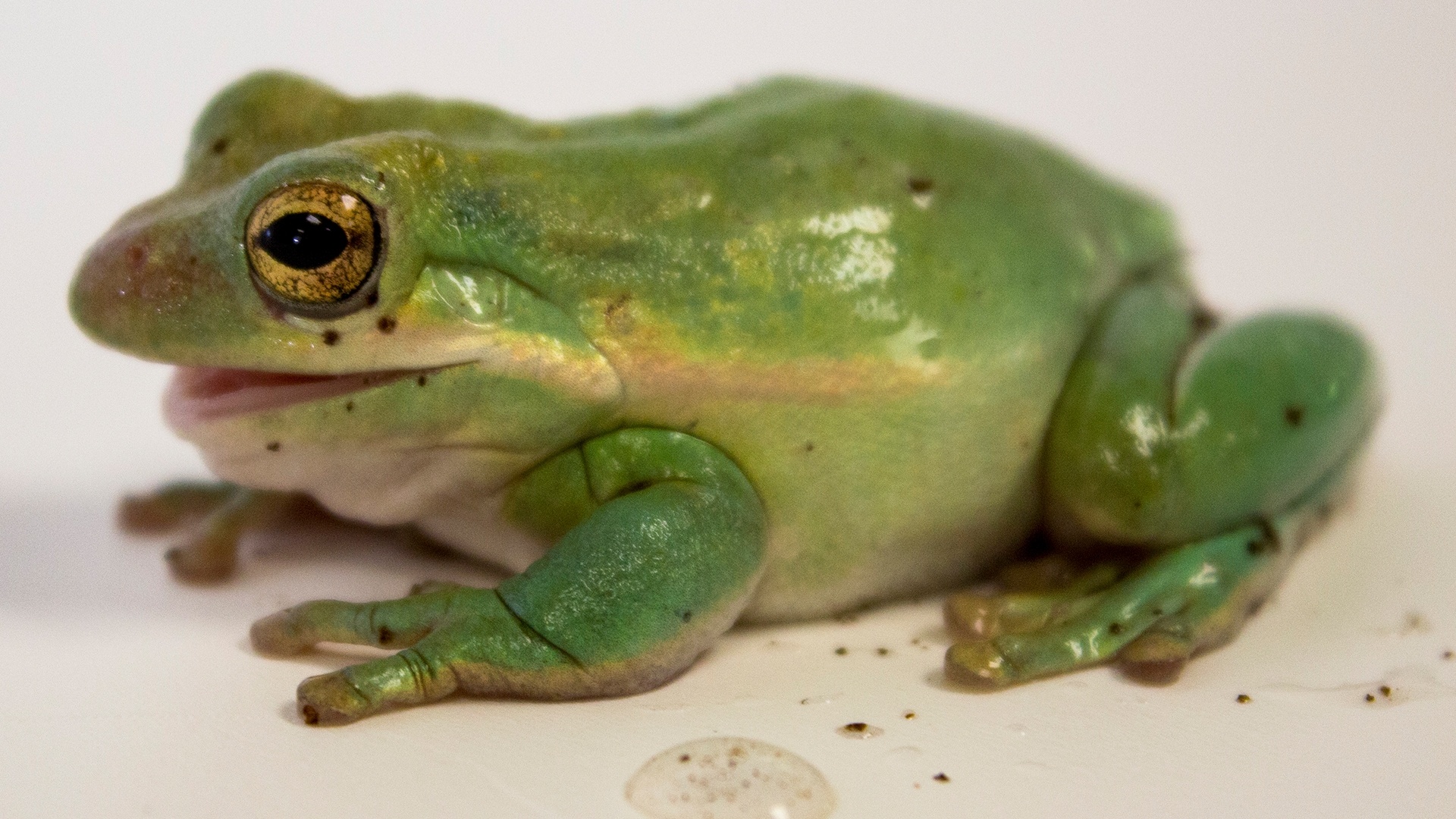
The White's tree frog is green above with a light color on its underside. It is named not for its color, but for the scientist who first discovered it.
White's tree frogs are great climbers, spending the majority of their time in the trees. They have large, sticky adhesive pads on their feet. These frogs are great at surviving in dry conditions. They will cover themselves in mucous to prevent from drying out.

When caring for these guys, special care must be taken to wear gloves any time you might come in contact with their skin. All amphibians have permeable skin that can absorb elements from their environment. This includes anything that could be on our hands, such as lotions or medications.

Andrea
The secretions of the skin of this species has been used in medicinal research. Scientists discovered that the secretion fights off Staphylococcus bacterial infections and herpes virus cold sores.
Australia, New Guinea
Usually forested areas
Length: 3-5 inches
Invertebrates and small vertebrates
Birds, small mammals, snakes
Good climber
Up to 300 eggs per clutch
Least Concern
Over 10 years

